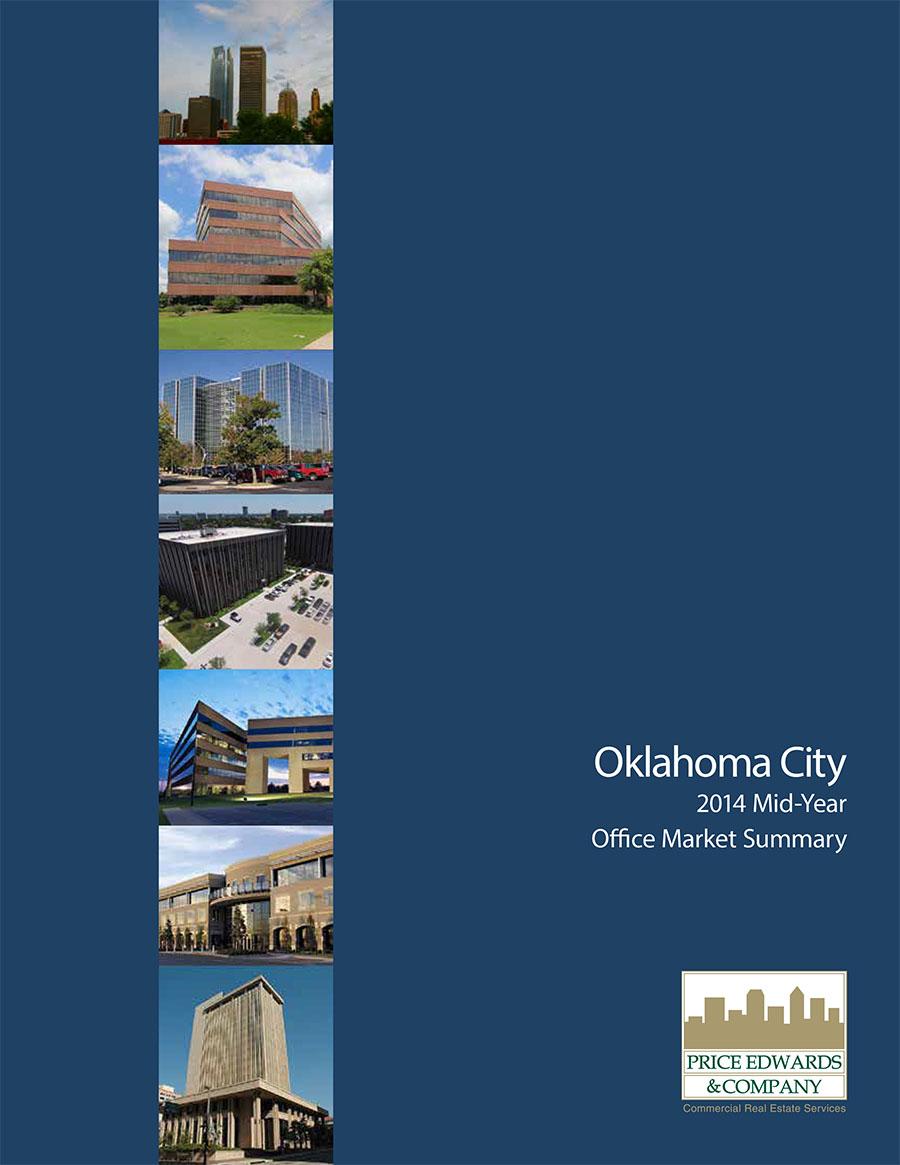
The Oklahoma City office market continues to thrive with healthy vacancy rates and historically high rental rates. Overall, the city’s vacancy rate dropped from 17.5% to 16.9%. Average rental rates across the market rose from $16.74 per square foot to $17.12 per square foot. In general, all submarkets performed exceptionally well except for the smaller Midtown submarket, which because of its size is less able to absorb the effects of large tenant relocations. In this particular instance, the Oklahoma Healthcare Authority vacated approximately 150,000 square feet at Shepherd Mall and moved into a refurbished and repurposed former hotel in the North submarket.
The Central Business District’s vacancy rate decreased from 28.6% to 21.4%. That sharp drop was due primarily to increased occupancy in the Class A portion of this submarket. The most impressive aspect of the downtown market remains the dwindling supply of Class A space. Class A vacancy shrunk from 9.3% to 1.4% which is likely an all-time low. Consequently, Class A rental rates increased from $19.62 to $21.41 per square foot, which is an all-time high. The true test of the CBD’s health will be measured in the coming 2-3 years as 3 different projects are poised to add over 300,000 square feet to the market at rental rates above the current Class A average. Additionally, two proposed new buildings are being pitched to high-end space users on the west side of downtown. All these buildings will test local tenants’ willingness to step up to pay the freight for higher quality office space at rates well above the current Class A average. Many will pass on the idea, but many others may not – recognizing that the additional per SF costs can be offset by more efficient space layouts in modern buildings. The fact is, tenants, don’t need as much space per employee as they did 15 to 20 years ago and that trend will continue in the next 15 to 20 years.
Demolition is currently underway at the site of the former Stage Center to make way for a 300,000 to 400,000 SF building which will be anchored by Oklahoma Gas & Electric Company. The site surrounding that building could be subject to further development as the Urban Renewal Authority is seeking development bids for the city-owned property directly south of the Stage Center site.
The overall suburban vacancy rate ticked upward from 11.6% to 13.0% which was primarily attributable to the previously mentioned Oklahoma Healthcare Authority. Although it was a net neutral event in terms of absorption, the authority’s new location is also a new building to our market report, resulting in a higher inventory denominator.
The Northwest submarket, which is the city’s largest, saw a slight vacancy increase from 8.9% to 9.4% although it actually had positive absorption of 52,000 square feet. As was the case with the Healthcare Authority, a new building was placed into the market when the former 72,000 SF Blue Cross Blue Shield building was purchased, renovated, renamed as The Parkway Building and offered for multi-tenant occupancy in the first half of the year. That addition created a higher inventory denominator resulting in a higher vacancy rate, despite the positive absorption.
Class A buildings in the Northwest submarket showed continued tightening with vacancies falling to 3.7%. Larger Class A users currently have very few space alternatives in this popular submarket and Class A rental rates have now risen to $22.37 per square foot. Several new projects are now being considered. However, some larger tenants will be vacating their current offices in the Memorial corridor in the next two years, which may delay any significant new development outside of build to suit projects. The first of those build to suits will be a new 120,000 square foot building for Linn Energy, which will leave approximately 80,000 square feet in the highly occupied Quail Springs Parkway Plaza. That building was the pioneering Class A development in the Memorial corridor in the mid-80’s and even today it remains the largest in that micro-market by far.
In general, we expect the market to remain healthy for the next few years despite fluctuations in inventory due to large relocations and the construction of additional inventory. So long as the local and national economies remain healthy and new construction is undertaken at a moderate rate, the local office market should remain in a reasonable balance.
View the 2014 Mid-Year Office Survey here.




